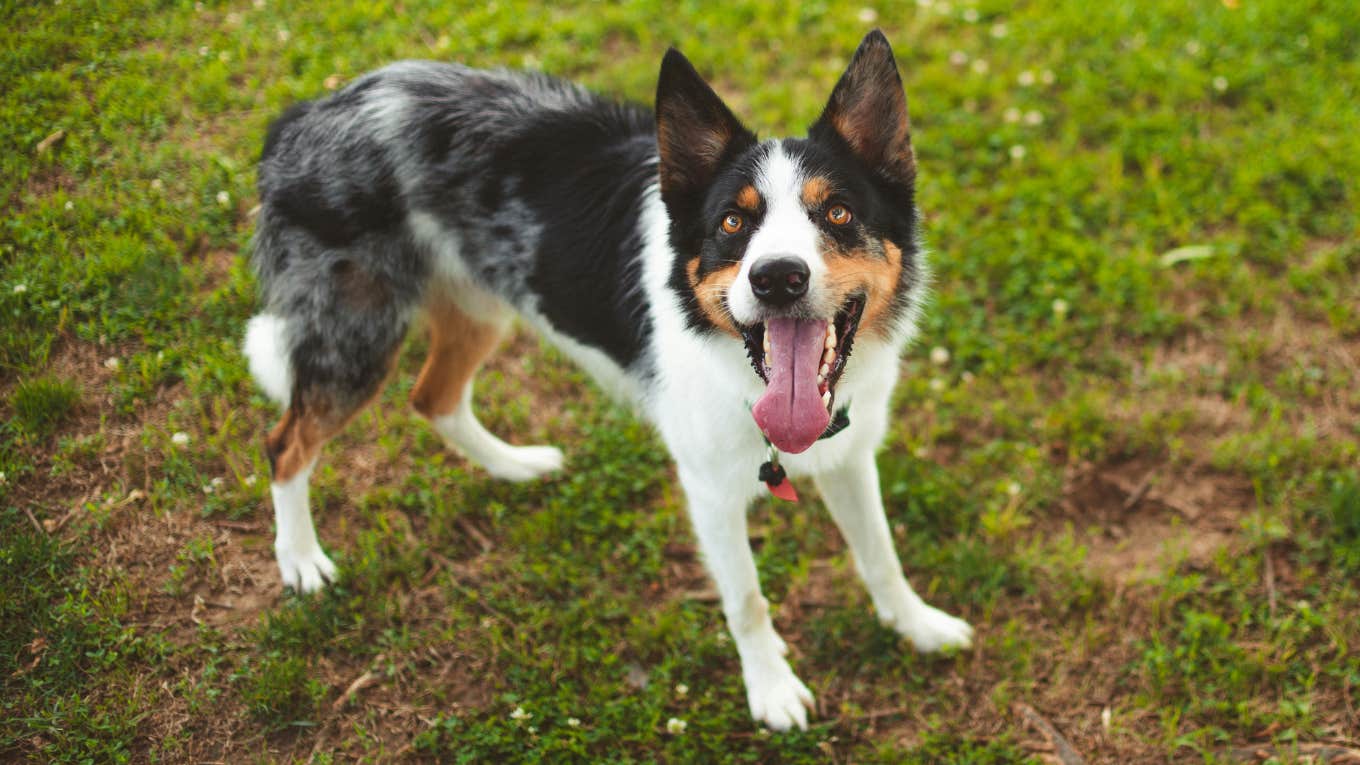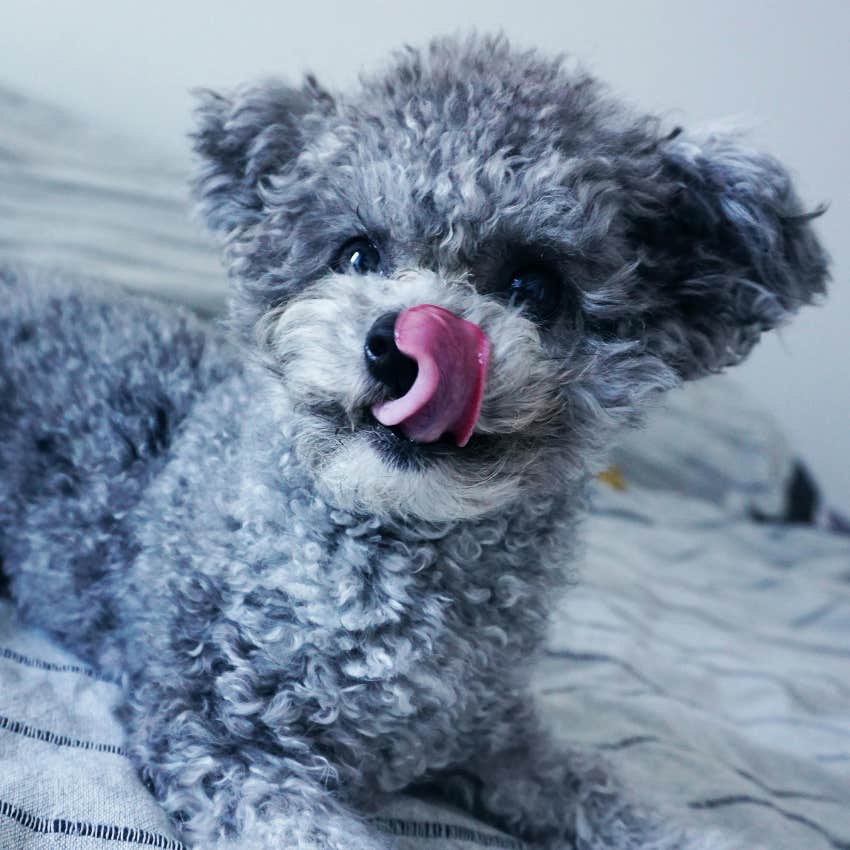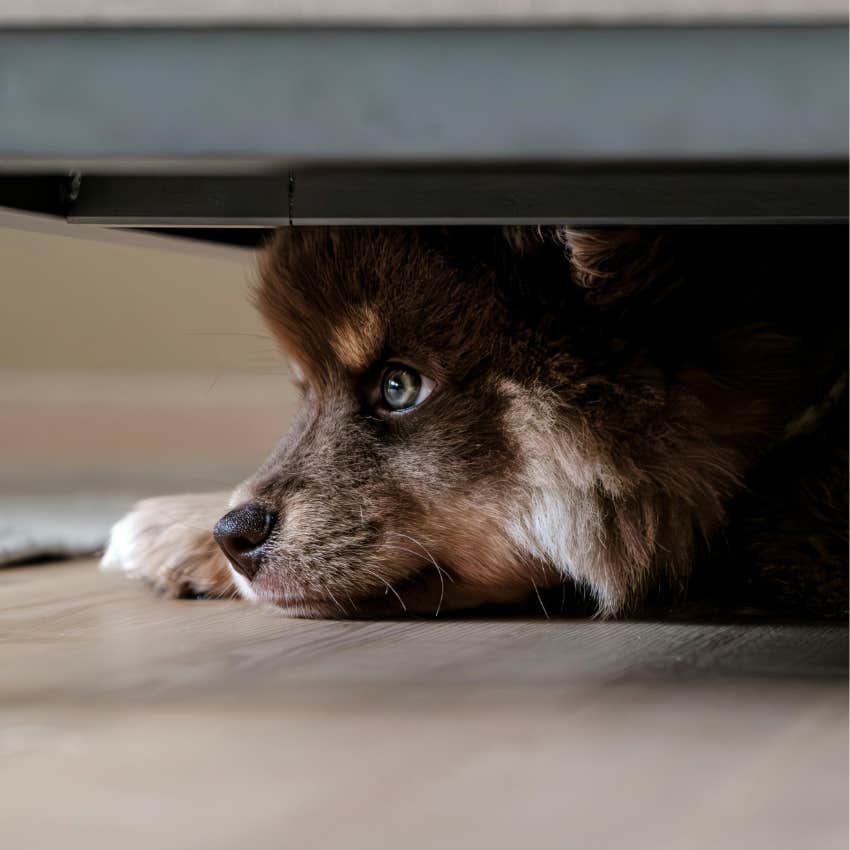8 Signs Your Dog Is Stressed, According To Veterinarians
Help your pup stay calm by knowing their stress signals.
 Brixiv / Pexels
Brixiv / Pexels Being a dog owner is a labor of love: waking up early to make sure your fur baby gets a morning walk and a delicious breakfast, plus all those endless tummy rubs.
Everyone who owns a pup wants to give them the best life possible, which means understanding their moods. One important part of understanding your dog’s inner world is knowing when they’re not feeling their best and helping them feel better.
The vet team at Upper Canada Animal Hospital shared various ways to recognize if your dog is feeling tense or anxious.
Here are 8 signs your dog is stressed, according to veterinarians:
1. Excessive yawning
Yawning can mean a dog is tired or bored, but if they’re yawning over and over, it can mean they’re stressed or anxious.
Dogs use yawning as a mechanism to calm themselves down. So, if you notice your pup yawning deep, slow, wide yawns, it could mean they need a change of scene to fully destress.
2. Hardened eyes
Dog owners know that when their furry friend looks at them with a soft gaze, it’s a look that transmits love and affection.
Dogs can also use their gaze to convey stress or fear. When their eyes get a cold, hardened look, it can mean that they’re in a state of distress. According to the American Kennel Club, hardened eyes can also signify aggression, especially if they’re guarding a precious toy.
In addition to hardened eyes, whale eyes can also show that they’re feeling stressed. Whale eyes occur when your dog looks sideways and shows the whites of their eyes.
One dog trainer noted that whale eyes mean your dog feels uncomfortable with whatever interaction is taking place. They often display whale eyes when they want some space. It’s important not only to know what your dog’s social cues are telling you but to respect whatever need they’re expressing.
3. Licking their lips
Another sign of doggie stress is when they lick their lips excessively. Your pup is bound to lick their chops when they’re chowing down, or when they smell you cooking up something delicious, but stress licking is different.
 Photo : Yevheniia Savchenko / Pexels
Photo : Yevheniia Savchenko / Pexels
If you see your dog licking more than usual, it might mean they need to decompress.
4. Pacing
Pacing back and forth is a direct signal that your dog feels stressed.
To ease your pup's anxiety, make sure they’re getting enough physical and mental stimulation, like going on a sniffy walk or playing a game of fetch.
5. Excessive shedding
Dogs with fur will naturally shed their winter and summer coats, but sometimes, excessive shedding means that they’re stressed out.
Shedding is their body’s stress response and can occur during a change of routine or by outside, anxiety-provoking situations, like thunderstorms or fireworks.
While the exact reason for stress shedding isn’t known, some vets believe it’s due to epinephrine, or adrenaline, which is the body’s primary stress hormone.
6. Heavy panting
Panting can be a normal pup behavior: It’s their primary way of cooling down when they’re feeling hot. Yet panting a lot can indicate that they’re stressed.
 Photo : Jhonny Salas Brochero / Pexels
Photo : Jhonny Salas Brochero / Pexels
Andrew Jones, a veterinarian, noted that when dogs feel nervous, they’ll pant more.
Jones shared that heavy panting can also indicate certain diseases that cause an increase in cortisol, a stress hormone, such as Cushing's disease.
7. Hiding and avoiding
You might notice that your doggo runs and hides in moments of stress. Sometimes, pups will hide to avoid something they don’t want to do, like get in the bath or go into their crate. Other times, the outside environment stresses them out, like loud claps of thunder during a storm.
 Photo: Sidde / Pexels
Photo: Sidde / Pexels
Let your dog know that they’re safe with you by speaking in a calm, soft voice, and giving them lots of tender loving care.
8. Ears pinned back
Another sign of an unhappy pup is when they pin their ears back. Dog lovers can tell a lot about how their canine companion is feeling just by the position of their ears.
When a dog’s ears are pointed upward and facing forward, it means that they’re engaged. If their ears are pulled back slightly, they’re feeling friendly. If their ears are pinned back tightly against their head, it means they’re stressed, anxious, or scared.
The more we know about our dog’s expressions, the more we can interpret what they’re going through and help them feel comfortable in whatever environment they’re in.
Alexandra Blogier is a writer on YourTango's news and entertainment team. She covers social issues, pop culture, and all things to do with the entertainment industry.
